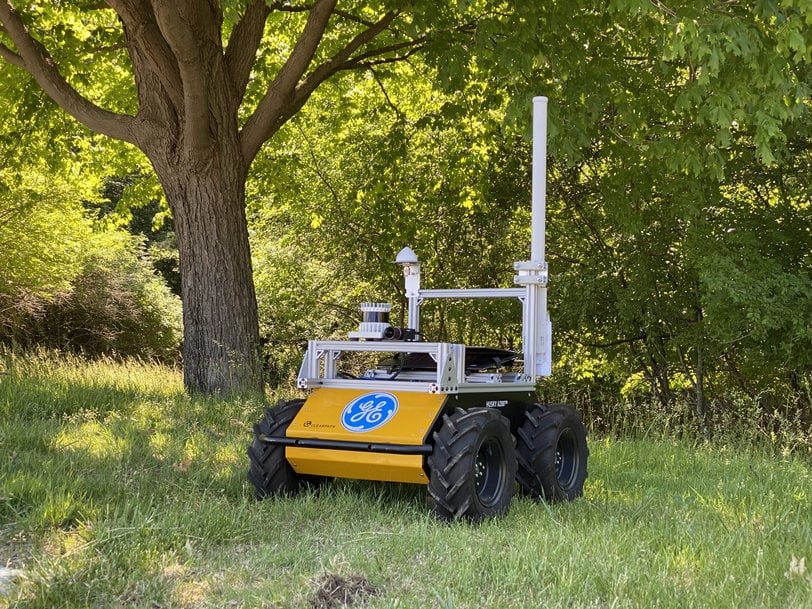GE Demonstrates “Autonomous Robot ATVer” with the US Army
If this was a road test, then the GE Research Robotics Team would have passed with flying colors. And they didn’t even have to drive.

- GE’s prototype ground vehicle successfully navigates on its own through unstructured environments, including forests and heavily wooded areas at its research campus in Niskayuna
- Army researchers have successfully tested this approach at their test facility in Maryland
- GE’s autonomous system integrates its novel Humble AI technology, which enabled the ground vehicle to determine certain vs. uncertain travel paths
- Demonstration may advance the Army’s efforts to move military vehicles more safely in off-road conditions
- Ability to assess risk in autonomous systems could accelerate future applications in industrial field services and wind turbine operations where safety and reliably are paramount.
The GE team, led by Senior Robotics Scientist, Shiraj Sen, successfully completed Year 1 of a project with the US Army through its Scalable Adaptive Resilient Autonomy Program (SARA) to develop and demonstrate a risk-aware autonomous ground vehicle that was capable of navigating safely in complex off-road test conditions. Here is a video, showing GE’s autonomous robot “ATVer” in action:
“One of the big challenges with autonomous systems is overcoming the risk factor, particularly when it involves equipment for complex military operations or critical infrastructure where safety and reliability are most important,” Sen said. “With the successful demonstration of our ‘risk-aware’ autonomous ground vehicle in our project with the Army, we’ve made progress in removing some of those risks and hopefully, provided a clearer path to more autonomous systems applications further down the road … or off-road.”
“In future Army scenarios, autonomous systems will have to reliably plan in the presence of challenging features they encounter while maneuvering in complex terrain,” Eric Spero, SARA Program Manager said. “Incorporating risk and uncertainty into the autonomy decision-making process enables our testbed platforms to show us what it looks like to plan a direct path instead of taking the long way around.”
GE’s project was one of eight funded by the U.S. Army’s Combat Capabilities Development Command Army Research Laboratory to advance autonomous, off-road navigation capabilities for military ground vehicles. The Army is committed to enhancing autonomous vehicle capabilities to perform safely and reliably in complex battlefield environments such as wooded areas where paths are unstructured, conditions uncertain and for which no maps exist to provide direction.
Sen said a key factor enabling the breakthrough in addressing risk was the integration of GE’s novel Humble AI technology. Humble AI is an algorithmic approach developed by GE artificial intelligence (AI) scientists that is capable of taking a step back and assessing much like a human might do when it encounters an uncertain situation.
“In our autonomous ground vehicle system, Humble AI was the key mechanism that enabled it to decipher known paths vs. uncertain paths when navigating unstructured, off-road terrains,” Sen said. “It processed the information gathered from the eyes of our vehicle – the vision and LIDAR technologies – and was able to move safely and avoid objects like tree or brush that might stop it in its tracks.”
Sen noted that GE scientists have already field tested its Humble AI algorithms to safely optimize the control of wind turbines to maximize energy input. In the case of wind turbines, the Humble AI operates within a zone of competency where it bases its decisions on known operating scenarios with which it is familiar. When it encounters a scenario it has never seen, it is designed to take a step back and relinquish control of the turbine into a default safe mode.
“Our project and partnership with the US Army has really enabled us to make some important advances in autonomous systems,” Sen said. “We believe the advances made on this project will not only help accelerate the deployment of future driver-less vehicle technologies; they will help encourage more autonomous solutions in other industry sectors like energy, aviation and healthcare that people depend on every day.”
www.ge.com

